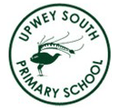Curriculum- Teaching and Learning

School Wide Teaching and Learning
In each edition of our school newsletter, we share with our community an insight into the curriculum being taught within our classrooms. This reflects our school's strong focus upon continuous improvement.
Each edition covers a different area of the curriculum, and is supported by our school-wide approaches to teaching and learning.
In this edition we focus upon what's coming up for each year level in Term Two, and again bring to your attention the importance of supporting our school's SWPBL and trauma-informed approach to learning.
The importance of an evidence-based Literacy Program in primary schools
As you would no doubt be aware, our school is extremely fortunate to be one of only ten schools Australia-wide to be taking part in a three-year research partnership with Macquarie University.
The gains in learning which are evident from this partnership can be seen across our school's literacy program, and have rocketed the reputation of our school across the region.
If you monitor coverage of educational items across the media you will notice that the 'reading wars' are gaining more and more coverage as state budgets and federal budgets start to focus on education and how to improve learning outcomes.
We are proud to say that our Literacy practice is at the forefront of the above, with the professional knowledge of our teachers evidently advanced in comparison to our region.
Links to two such articles are below:
Primary schools dump ‘predictable’ picture books as reading toolsby Adam Carey, The Age May 2021
The reading wars are over - and phonics has wonOpinion piece bySarah Mitchell
NSW Minister for Education and Early Childhood Learning, The Sydney Morning Herald November 2020
Childhood Trauma and the Berry Street Education Model
At our school, we are well-versed on the importance of promoting an SWPBL environment which is rich in:
- Consistency; in daily routine and school-wide structures
- Predictability; in adult-responses and support
- Immediate reinforcement of desirable behaviours; through a combination of intrinsic motivators
The above factors are an important base upon which we encompass the trauma-informed Berry Street Education Model.
When children are exposed to trauma, the effects can be widespread and long-lasting, not only on behavioural and social skills, but also in the classroom. Children and adolescents exposed to childhood trauma are more likely to experience poor academic performance, have difficulty forming friendships and have challenging classroom behaviours. They are also at risk of developing post-traumatic stress disorder, depression, anxiety disorders and conduct problems.
Most children have nurturing home environments, but a concerning number experience trauma through abuse or neglect in Australia. It’s estimated around 8.9% of children experience physical abuse, 8.6% sexual abuse, 8.7% emotional abuse and 2.4% neglect. The rates could be higher as such experiences are difficult to measure.
For more information on what trauma-informed practice means within schools, we encourage you to visit:
Five approaches for creating trauma-informed classrooms
Why every teacher needs to know about childhood trauma
What's the Curriculum focus coming up in the next edition of the newsletter?
In the next edition of our newsletter, we will be sharing information with you about our Mathematics curriculum.
